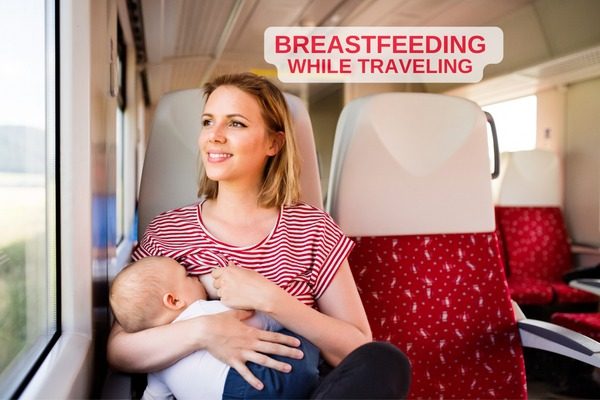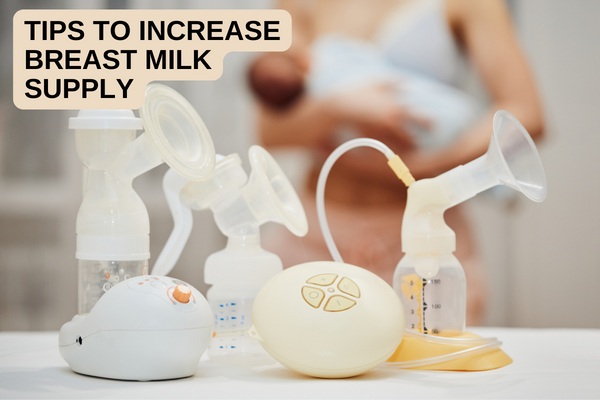Key Points
- Legal Rights & Planning: Research airline policies and prepare a breastfeeding travel kit to ensure a smooth journey.
- Essential Gear: Pack lightweight breast pumps, nursing covers, and storage solutions for convenience and privacy.
- Expert Travel Tips: Adjust schedules for time zones, stay hydrated, and find comfortable breastfeeding/pumping spots.
- Troubleshooting Tips: Manage common issues like clogged ducts and milk supply changes with practical strategies.
- Support Resources: Utilize apps, online forums, and virtual consultations for support and guidance on breastfeeding while traveling.
Traveling while breastfeeding presents unique challenges, from feeding on the move to managing milk storage. This concise guide offers targeted advice and practical solutions to help you navigate these issues, ensuring a smoother travel experience. It focuses on expert tips, essential gear, and supportive insights to empower breastfeeding mothers with the knowledge and tools they need for stress-free journeys, aiming to enhance both comfort and confidence during travel.
Your Rights and Planning Ahead
Understanding and asserting your legal rights as a breastfeeding mother is fundamental when traveling. Before your trip, research the breastfeeding and pumping policies of the airlines you’ll be flying with, as regulations can vary. For up-to-date information on rights across different jurisdictions, check out resources such as the International Breastfeeding Journal and government health websites. Equally important is preparing a travel kit tailored for breastfeeding, which should include all necessary supplies for pumping, storing milk, and ensuring your comfort and privacy. Additionally, familiarizing yourself with the cultural norms and legal protections for breastfeeding at your destination can help avoid uncomfortable situations and ensure a smoother experience.
Also Read – Breastfeeding Tips : All You Need To Know
Essential Gear & Strategies For Breastfeeding And Pumping Travelers
- For the Journey:
- Compact, lightweight breast pumps, discreet nursing covers, and comfortable breastfeeding clothing are essentials. Choose gear that simplifies the process, enhances privacy, and fits easily in your travel bag.
- Breast Milk Storage:
- Invest in portable coolers and ice packs for safely storing breast milk. Know the regulations for carrying breast milk through security and the best practices for freezing and thawing milk.
Expert Tips for Airport and In-Flight Breastfeeding
To manage breastfeeding during flights:
Anticipate time changes by gradually adjusting your schedule before the trip to match your destination’s timezone, helping mitigate jet lag’s impact on milk supply.
Stay hydrated and encourage frequent breastfeeding or pumping to maintain supply.
Seek privacy and comfort by choosing seats wisely and utilizing nursing covers or blankets.
Dealing with Jet Lag and Milk Supply: A Step-by-Step Guide
- Start Early:
- Adjust your and your baby’s schedule gradually a few days before your trip to align closer with your destination’s timezone.
- Stay Hydrated:
- Drink plenty of water to maintain milk production.
- Frequent Feeding/Pumping:
- Increase breastfeeding or pumping sessions to stimulate milk supply, even if it means waking up at night.
- Pump at Night:
- If your baby sleeps through, consider night pumping to keep up your milk supply.
Breastfeeding in Different Cultural Contexts
Before traveling, research the local customs and legal rights regarding breastfeeding. Lactation consultants emphasize cultural sensitivity and advise on discreet breastfeeding methods in public. Connecting with local breastfeeding support can provide additional assistance and resources during your stay.
Navigating Travel with and without Your Baby
- With Baby: Plan feedings around travel schedules, utilize breastfeeding-friendly spaces, and maintain flexibility with your baby’s feeding routine.
- Without Baby: Focus on regular pumping to maintain supply, safely storing pumped milk, and managing equipment discreetly.
Tip: When traveling without your baby, ensure clear communication with caregivers about the baby’s feeding schedule and preferences. Providing detailed instructions on feeding routines, how to warm stored breast milk, and how to recognize signs of fullness and hunger in your baby can help maintain a consistent feeding pattern and comfort for your baby in your absence
Troubleshooting Common Breastfeeding Issues While Traveling
When traveling, breastfeeding mothers may encounter issues such as clogged ducts, fluctuations in milk supply, or finding comfortable nursing positions in tight spaces. Here’s how to handle these:
- Clogged Ducts: Apply warm compresses and massage the affected area before feeding or pumping to help clear the blockage.
- Supply Changes: Stay hydrated and maintain a regular feeding/pumping schedule as much as possible to stabilize supply.
- Comfortable Positions: Use travel pillows to support your baby and find a position that’s comfortable for both of you in different seating arrangements.
Seeking advice from a lactation consultant can provide personalized solutions, and many offer remote consultations, ensuring support is just a call away.
Health Considerations: Medicines, Vaccinations, and Breastfeeding
When it comes to travel vaccinations and medications, consulting with healthcare providers is key. They can offer advice tailored to your breastfeeding journey, ensuring both you and your baby remain healthy during your travels.
Packing for Success
- Portable Breast Pump: Choose a lightweight and efficient pump for easy travel.
- Storage Bags: Bring enough bags for storing breast milk securely.
- Lightweight Nursing Cover: For privacy and comfort while breastfeeding in public.
- Hands-Free Pumping Bra: Allows multitasking and convenience during pumping sessions.
- Compact Pumps: Opt for small, battery-operated pumps that fit in your handbag.
Overcoming Common Challenges
Resources and Support
A wealth of online resources exists to support breastfeeding mothers on the go. Apps specifically designed to locate breastfeeding-friendly facilities can be a lifesaver. Additionally, online forums and social media groups offer a platform for mothers to share tips, experiences, and offer support to one another. Virtual lactation consultations have become increasingly accessible, providing professional advice and support tailored to your specific needs, ensuring you have the confidence and knowledge to breastfeed successfully, even while traveling.
Also Read- Hacks For The Breastfeeding Working Mom
Conclusion
Traveling while breastfeeding, though challenging, can be deeply rewarding with the right preparation and mindset. Planning, understanding legal rights, downloading the right apps and packing essential gear, can provide you with the essential toolkit for any travel scenario. Support networks, both online and in person, and the empowerment that comes from shared knowledge and experiences can also prove to be extremely handy and valuable.
Ready to Enhance Your Breastfeeding Journey While Traveling?
Travel confidently while breastfeeding with the support you need at your fingertips. Veira Life brings you virtual pregnancy and doula support services from experienced doulas and midwives, dedicated to offering personalized care. Learn more about how Veira Life can assist your breastfeeding journey during travel by visiting our website. We’re here to provide answers and support, helping you to have a positive and empowering experience.
References
FAQs
Fresh breast milk can travel up to 4 hours at room temp, 5 days refrigerated, and 6 months frozen.
Use a portable pump or nurse directly, planning stops for comfort.
Your baby needs to be in an appropriate car seat when car is in motion. You can breastfeed in a parked car for safety.
Keep milk cold with ice packs in a cooler; if frozen, it lasts 24 hours.







